Black Bears in Connecticut
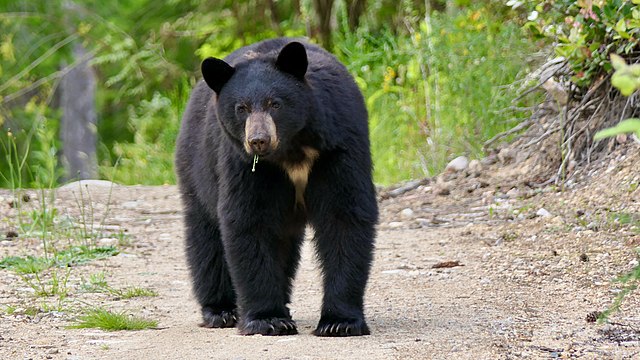
Black bear eating a dandelion. photo: Sunshinedave, Wikimedia Commons
By Cornel Matarrese
(c) Connecticut Explored Inc., 2021
Have you ever seen a black bear walking next to you in the wild? If so, how did you feel?
Once I went biking on a trail in the woods. There were trees to my right. I looked and saw a huge black figure. Since I was going fast, I couldn’t tell what it was. I stopped. I realized that it was a huge black bear! It was a few feet away from me.
At first, I got very scared. But I started calming myself down. I noticed that the bear didn’t do anything. It just slowly walked away.
Most people aren’t used to having black bears where they live. It’s normal to be a bit frightened. Have you ever wondered why there are so many black bears in Connecticut?
Why are There so Many Black Bears in Connecticut?
There are more black bears now than there were for many years. This is because the European settlers who first came to North America were mainly farmers. The settlers cut down trees to make fields. This caused bears to move away because they need trees. There were no more bears in Connecticut by the mid-1800s.
Over time, Connecticut’s economy changed. There were fewer farms. The trees grew back. The bears came back by the 1980s. In 2020 more than 8,500 bear sightings were reported to the State of Connecticut’s Department of Energy and Environmental Protection (DEEP).
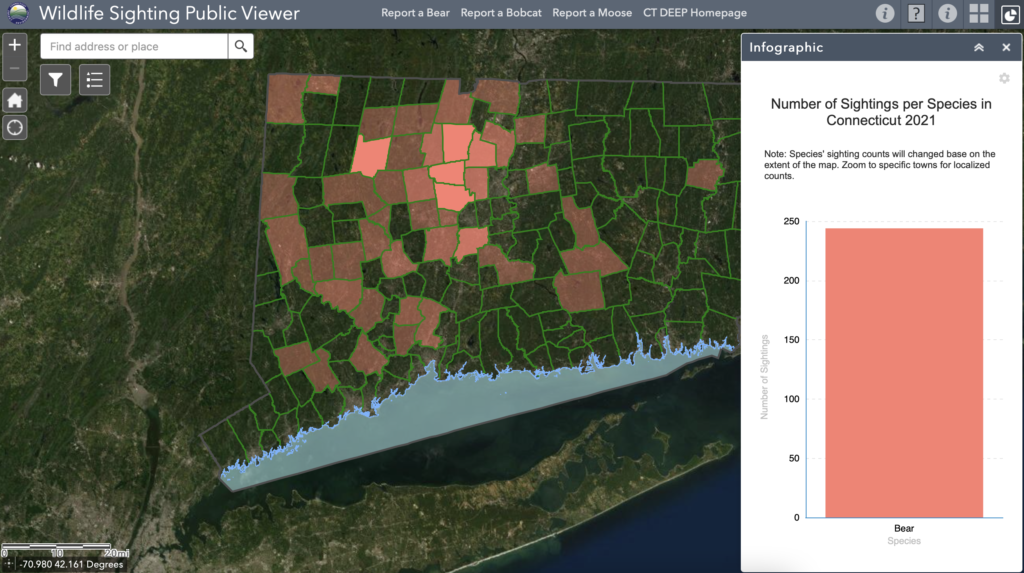
Wildlife Public Viewer, Dept of Energy and Environmental Protection, screen shot taken March 2021. https://ctdeep.maps.arcgis.com/apps/webappviewer/index.html?id=924a7664caac4b9ba54512233b7d5495
How do Black Bears Adapt to Life Near Humans?
Annual bear sightings have increased in recent years. Jay Kaplan from the Roaring Brook Nature Center told me why. He said that bears “don’t have natural enemies and they are very adaptable creatures.” It is important that we learn to live with these creatures.
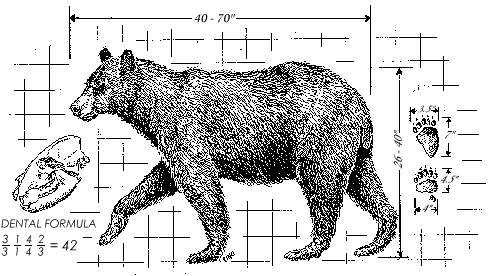
“Blueprint for a Black Bear,” from https://portal.ct.gov/DEEP/Wildlife/Fact-Sheets/Black-Bear
Black bears have big bodies with short, thick legs. They have short tails, curved claws, small eyes, round ears, and long snouts. Black bears usually grow to the size of an adult human.
Black bears eat whatever they find in the forest. They usually find fruit, berries, nuts, roots, and stems to eat. They also might find honey, fish, insects, rodents, and animal carcasses.
Black bears are attracted by human food. They have a good sense of smell. But human food and trash makes them sick. Bears should eat what they find in their habitat. We should avoid attracting black bears. We should never feed them. We should remove bird feeders. Never leave pet food outside overnight. Wait until the morning to put trash out for collection. Some people use bear-proof trash barrels. This is a great solution. Maybe you should consider getting one. A strong and unpleasant odor of ammonia can help to cover the food smell. Ammonia is a common household chemical.
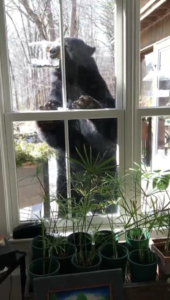
Black bear at Nita Colgate’s bird feeder, March 2021, Cornwall. Courtesy of the Cornwall Chronicle
Watch the video of a black bear at a bird feeder in Cornwall, courtesy of the Cornwall Chronicle. As Nita Colgate told the newspaper, “When I first saw him, … I looked up — and up, and up! He WAS big. But he stayed quiet and focused on the sunflower seeds. … He moved away slowly after the feeder fell off the glass. No more window feeders this year!”
What Do Ear Tags Mean?
Have you ever seen a bear with something attached to its ear? This is an ear tag. Only DEEP is allowed to tag bears. Its officers tag, measure, and weigh every bear they find. They do not only tag problematic bears. They collect the information to understand more about the population of bears in Connecticut. Each year they use a different color for the ear tags.
What Should You Do If You See a Black Bear?
DEEP has tips for what to do if you see a bear. Most importantly try not to get close to the bear. Stay calm. Usually a bear will see you and continue what it’s doing. It will probably walk away, unless it feels threatened! A mamma bear will do anything to protect and defend her cubs.
Usually bears don’t charge at you. If you run, they might think it’s a game. Never run away from the bear. A bear can run up to 35 miles per hour! The fastest person in the world can’t run that fast. Talk softly. Keep looking at the bear while backing away. Never turn your back to the bear. Do not climb a tree. The bear will follow you all the way up the tree!
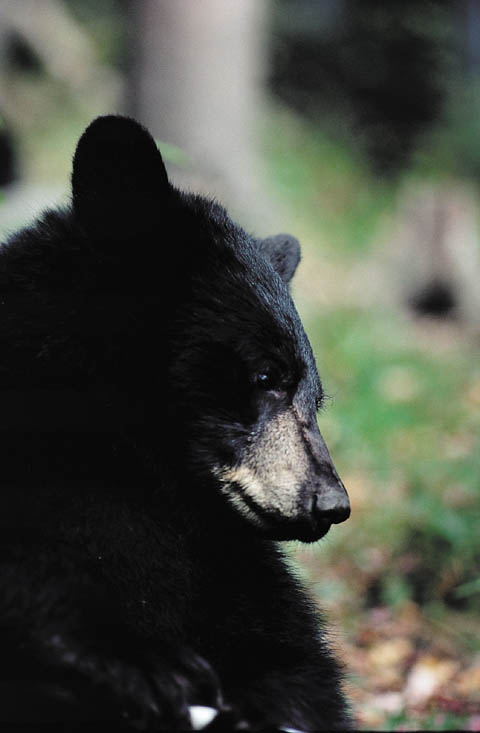
Black bear, photo: Dr. William Weber, Wikimedia Commons
Bears are very gentle creatures. We should be grateful for having such a beautiful animal in Connecticut.
Cornel Matarrese is a fourth grader in Simsbury, Connecticut.
Sources
Interview with Jay Kaplan, director of Roaring Brook Nature Center, 70 Gracey Road, Canton. https://www.roaringbrook.org
DEEP (Department of Energy and Environmental Protection) website. There a many resources for finding out more about black bears in Connecticut. https://portal.ct.gov/DEEP/Wildlife/Nuisance-Wildlife/Living-with-Black-Bears
Black Bears by Mara Grunbaum, Children’s Press, 2019
For an information and coloring page for children, visit the DEEP’s webpage HERE.
Thank you to the Cornwall Chronicle!



